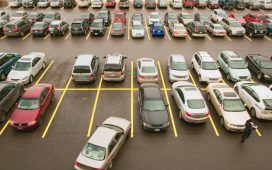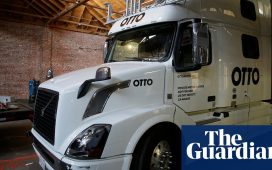Not a single sedan or hatchback ranked in the top 10 most bought cars in Australia in 2023 – a year that set an all-time record for new car sales – as the nation’s love affair with fuel-thirsty SUVs and utes reached new heights.
The top three most sold cars in Australia last year were utes, with the next seven most popular new cars all SUVs, according to new data from the Federal Chamber of Automotive Industries (FCAI), which said 2023 set an all-time record for new vehicle sales with more than 1.2m vehicles delivered.
The Ford Ranger usurped Toyota’s HiLux as the most sold car model, with the vehicles switching their rankings from 2022. There were 63,356 Ford Rangers and 61,111 HiLuxes bought last year, with the Isuzu Ute D-Max third most popular with 31,202 sales.
SUVs and light commercial vehicles – a category that includes utes – accounted for 78.4% of all sales in 2023. Passenger vehicles, which covers sedans and hatchbacks, comprised just 17.4% of cars sold, while heavy commercial vehicles which include trucks made up 4.3% of sales.
Experts have previously pointed to manufacturers doubling their spend on advertising SUVs and utes over the past decade, and various tax perks such as the instant asset write off scheme as factors that have been nudging Australians towards larger vehicles in recent years.
The latest figures lay bare the dramatic change in vehicle taste in Australia over the past decade.
In 2013, SUVs and light commercial vehicles accounted for 47.4% of sales, less popular than standard passenger vehicles at 49.9%.
A decade ago, the Toyota Corolla was the most popular car, followed by the Mazda 3. Vehicles including the Holden Commodore, Hyundai i30, Toyota Camry and Holden Cruze were also among the 10 most popular choices for drivers.
While the Ford Ranger and Toyota HiLux also featured in the top 10 selling cars of 2013, they were among just four utes. None were SUVs.
In a sign that tastes are moving away from smaller cars, the Toyota Corolla has entirely dropped off the top 10 list in 2023, despite being the sixth most popular vehicle choice in 2022.
Despite the soaring popularity of SUVs – which Australia Institute analysis found has led to drivers needlessly spending an extra $13bn annually to fuel their larger cars – 16.2% of 2023’s sales were of either electric, plug-in hybrid or standard hybrid vehicles.
Battery electric vehicles accounted for 7.2% of sales, with the Tesla Model Y the sixth most sold car.
The FCAI chief executive, Tony Weber, said “this extraordinary result is a testament to the adaptability and resilience of both industry players and consumers alike”.
“Despite the supply chain disruptions faced in recent times, consumers now have greater access to a broad range of choices, fostering increased accessibility in the market,” Weber said.
The sales figures come as the automotive industry and climate advocates eagerly await the release of details of the Albanese government’s fuel efficiency standard, which many were hoping for in 2023.
While the Albanese government has promised but not yet introduced a fuel efficiency standard, Australia stands alongside Russia as one of the few developed nations without one.
Fuel efficiency standards set by governments create a cap for emissions across a manufacturer’s overall sales. This provides an incentive for carmakers to supply low- and zero-emissions vehicles and penalises companies that do not.
Australia’s lack of a fuel efficiency standard has led to local EV supply issues, as manufacturers are financially incentivised to direct their stock to foreign markets. The industry reports new electric cars often selling out within hours of coming on the market.
A fuel efficiency standard would probably alter the type of vehicles that enter the Australian market, including SUVs. Weber said he was hopeful the federal government will introduce a fuel efficiency standard in 2024 “that achieves the policy outcomes that lead to emission reductions while enabling Australians to drive the vehicles that they need and want”.
Growing popularity of larger cars has begun to change how drivers and pedestrians use Australian roads. As comparable countries with fuel efficiency standards reduce their transport emissions, carbon emissions from cars and light trucks in Australia has increased by 17% over the past two decades.
Meanwhile, studies have found that children involved in a fatal crash are eight times more likely to have been struck by an SUV than a standard car.
Late last year, Standards Australia proposed increasing the required length of off-street parking spots by 20cm to accommodate the influx of larger vehicles.










